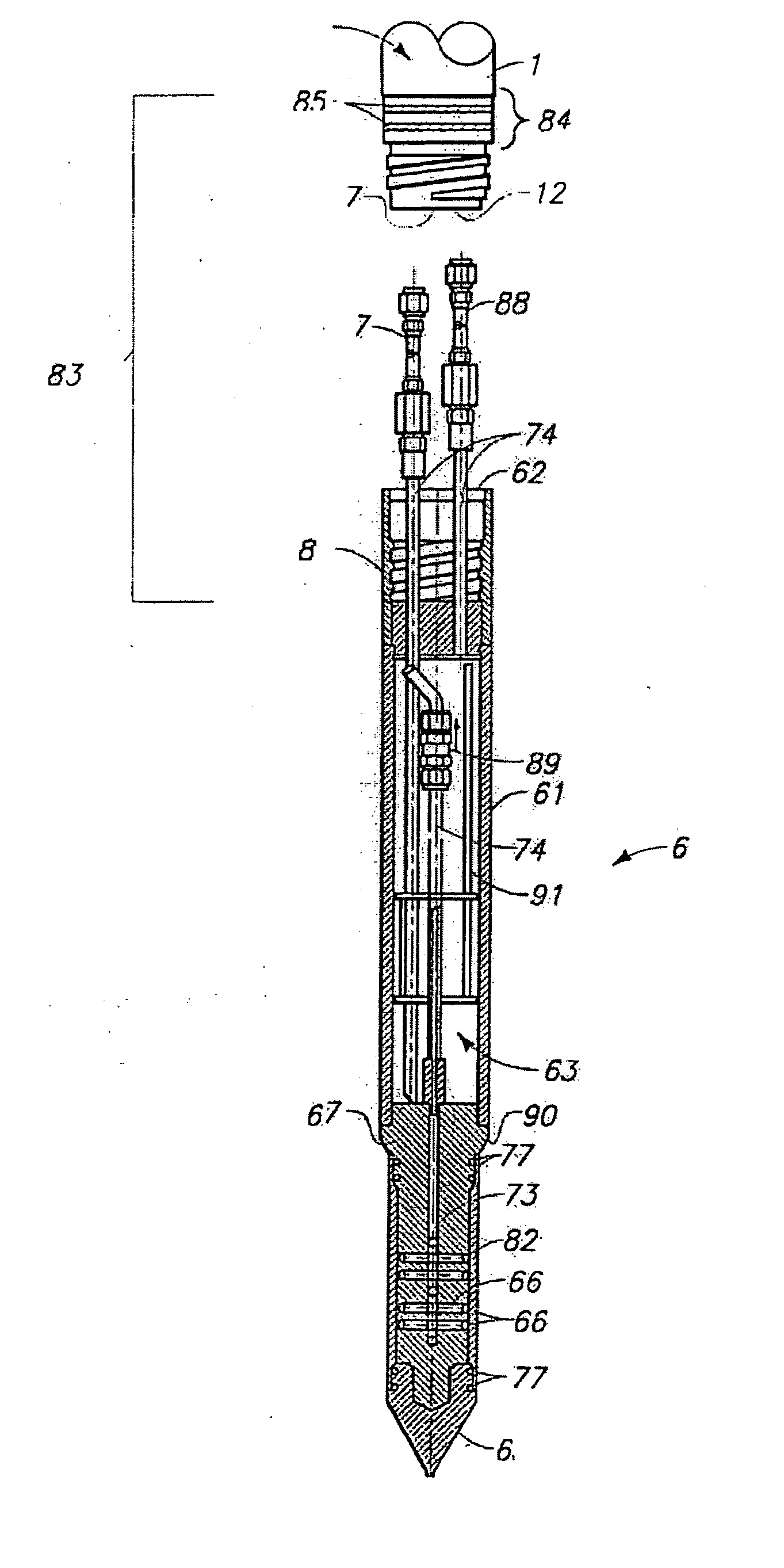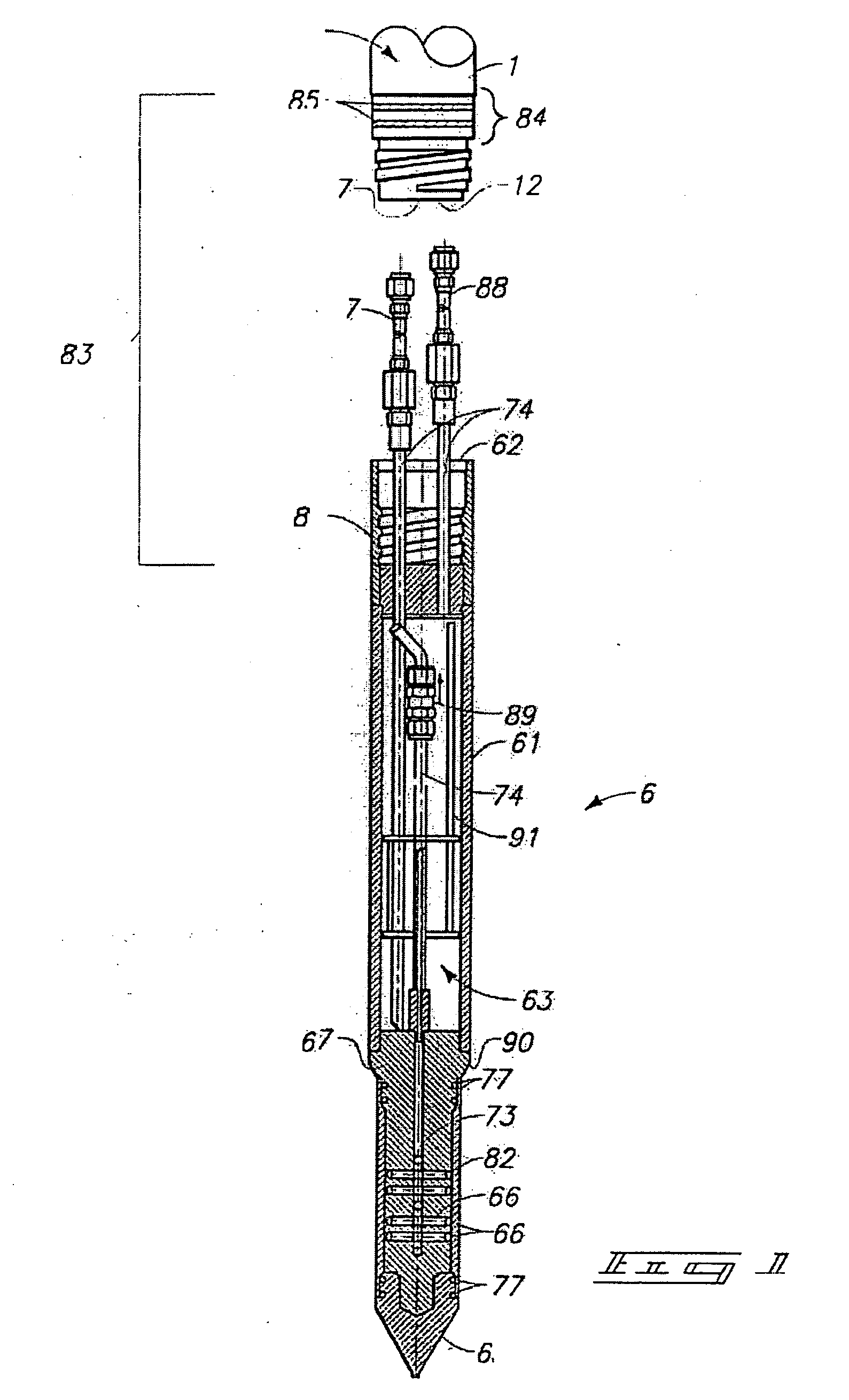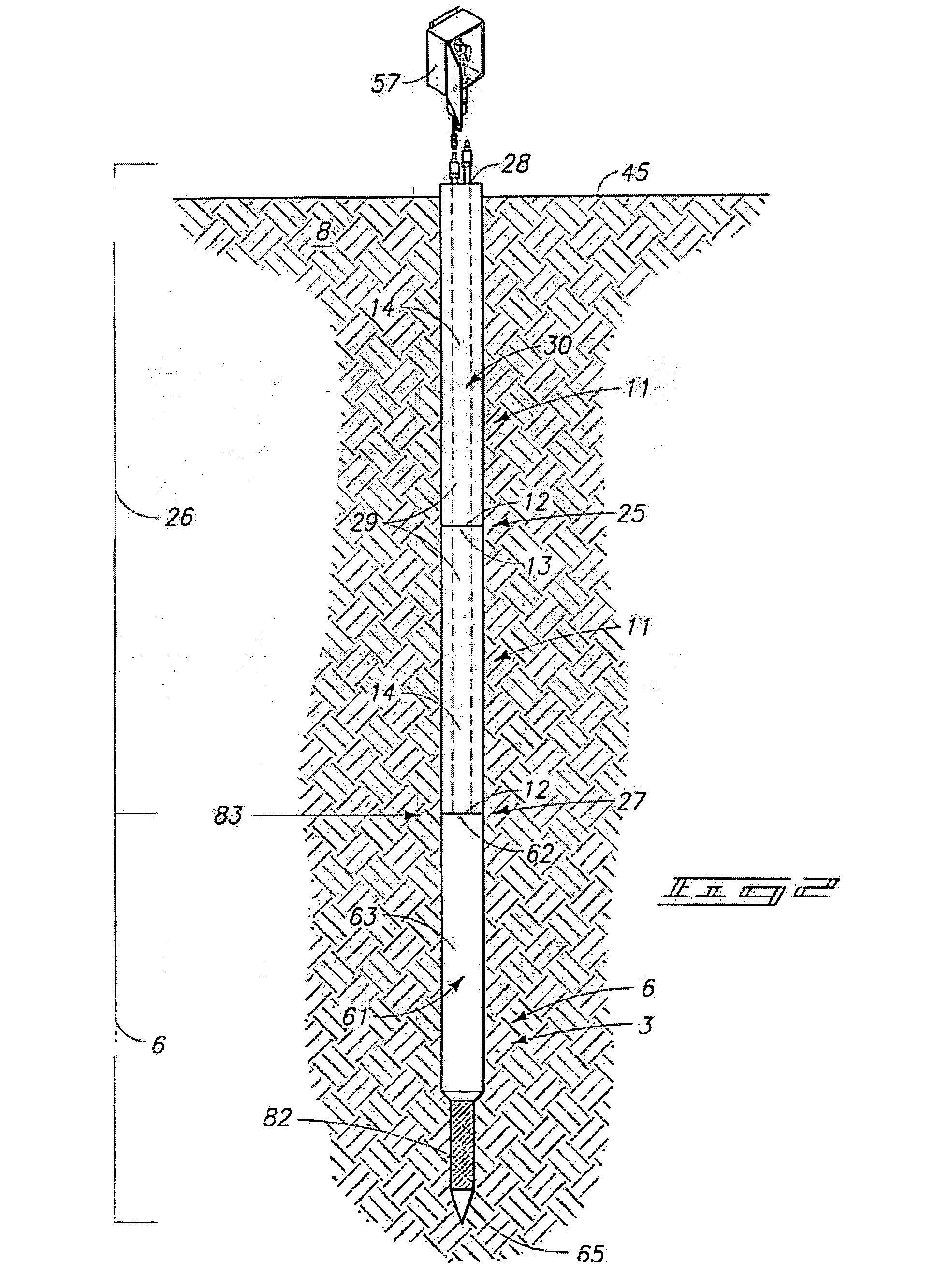Lysimeter apparatus
a lysimeter and apparatus technology, applied in the direction of testing water, instruments, borehole/well accessories, etc., can solve the problems of limited usefulness, high undesirable excavation or drilling, and inability to install prior lysimeters
- Summary
- Abstract
- Description
- Claims
- Application Information
AI Technical Summary
Problems solved by technology
Method used
Image
Examples
Embodiment Construction
[0015] This disclosure of the invention is submitted in furtherance of the constitutional purposes of the U.S. Patent Laws “to promote the progress of science and useful arts” (Article 1, Section 8).
[0016] The invention relates to methods and apparatus for subsurface testing. More specifically, the invention relates to methods and apparatus for sampling subsurface liquids from the substrate. One embodiment of the invention allows such sampling to be carried out in either contaminated or non-contaminated sites without the need for drilling, coring, or prior excavation. In one embodiment, a method includes placing the instrumented probe into the substrate using direct push, sonic drilling, or a combination of direct push and sonic drilling.
[0017]FIGS. 1 and 2 show a lysimeter 6 for sampling subsurface liquids. The lysimeter 6 includes a lysimeter casing 61. The lysimeter casing 61 includes a drive portion 62, a reservoir portion 63, and a tip portion 65. The tip portion 65 includes ...
PUM
| Property | Measurement | Unit |
|---|---|---|
| volume | aaaaa | aaaaa |
| diameter | aaaaa | aaaaa |
| diameter | aaaaa | aaaaa |
Abstract
Description
Claims
Application Information
 Login to View More
Login to View More - R&D
- Intellectual Property
- Life Sciences
- Materials
- Tech Scout
- Unparalleled Data Quality
- Higher Quality Content
- 60% Fewer Hallucinations
Browse by: Latest US Patents, China's latest patents, Technical Efficacy Thesaurus, Application Domain, Technology Topic, Popular Technical Reports.
© 2025 PatSnap. All rights reserved.Legal|Privacy policy|Modern Slavery Act Transparency Statement|Sitemap|About US| Contact US: help@patsnap.com



